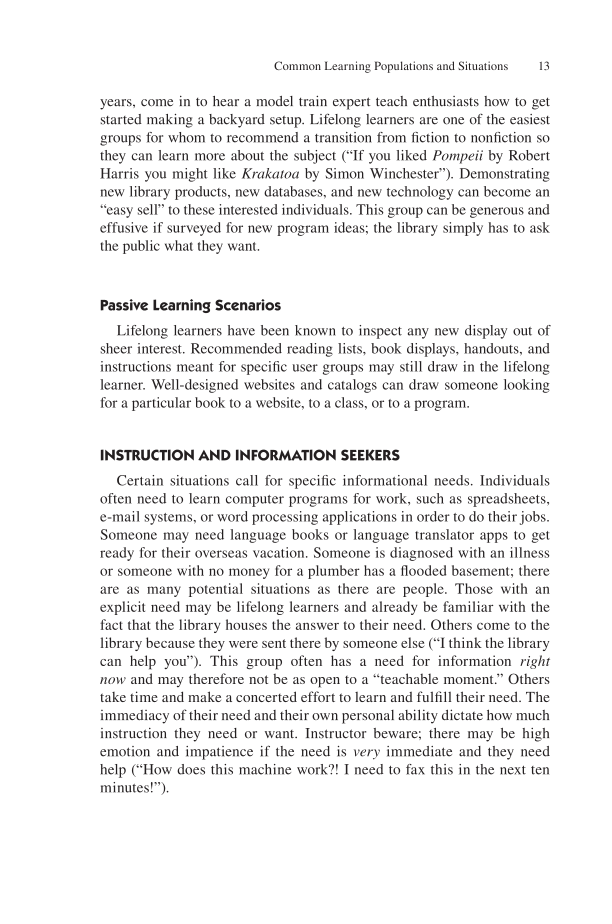Common Learning Populations and Situations 13 years, come in to hear a model train expert teach enthusiasts how to get started making a backyard setup. Lifelong learners are one of the easiest groups for whom to recommend a transition from fiction to nonfiction so they can learn more about the subject (“If you liked Pompeii by Robert Harris you might like Krakatoa by Simon Winchester”). Demonstrating new library products, new databases, and new technology can become an “easy sell” to these interested individuals. This group can be generous and effusive if surveyed for new program ideas the library simply has to ask the public what they want. Passive Learning Scenarios Lifelong learners have been known to inspect any new display out of sheer interest. Recommended reading lists, book displays, handouts, and instructions meant for specific user groups may still draw in the lifelong learner. Well-designed websites and catalogs can draw someone looking for a particular book to a website, to a class, or to a program. INSTRUCTION AND INFORMATION SEEKERS Certain situations call for specific informational needs. Individuals often need to learn computer programs for work, such as spreadsheets, e-mail systems, or word processing applications in order to do their jobs. Someone may need language books or language translator apps to get ready for their overseas vacation. Someone is diagnosed with an illness or someone with no money for a plumber has a flooded basement there are as many potential situations as there are people. Those with an explicit need may be lifelong learners and already be familiar with the fact that the library houses the answer to their need. Others come to the library because they were sent there by someone else (“I think the library can help you”). This group often has a need for information right now and may therefore not be as open to a “teachable moment.” Others take time and make a concerted effort to learn and fulfill their need. The immediacy of their need and their own personal ability dictate how much instruction they need or want. Instructor beware there may be high emotion and impatience if the need is very immediate and they need help (“How does this machine work?! I need to fax this in the next ten minutes!”).
Document Details My Account Print multiple pages
Print
You have printed 0 times in the last 24 hours.
Your print count will reset on at .
You may print 0 more time(s) before then.
You may print a maximum of 0 pages at a time.














































































































































